|
Noctilucent clouds (NLC) over London
Rare meterological formation seen in Brixton, 2.30am, 23rd June 2006
Looking out of my window, I saw this crazy blue glowing cloud over London - it looked like the Aurora Borealis had gone walkabout from the north pole.
The cloud seemed to be slowly changing hues from blue to a greeny blue and spreading in a north easterly direction. It looked very, very weird.
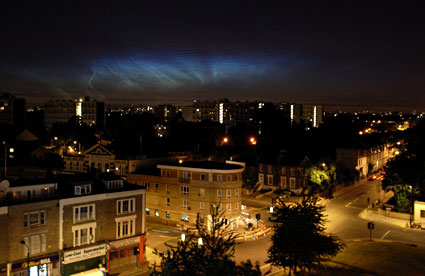
(As seen on the BBC news!)
Using my wobbly desktop tripod, I grabbed a few wideangle shots with my Ricoh GR compact camera and managed one long exposure shot with my Nikon (I had to have the camera hanging precariously out of the window to capture the scene!).
The pics don't really capture the full weirdness of what I saw, but I decided to send them into a mate at the BBC in the morning.
They were so intrigued that they ran one of the pictures on the 1.30 news, and asked viewers if they'd seen anything or knew what the clouds were.
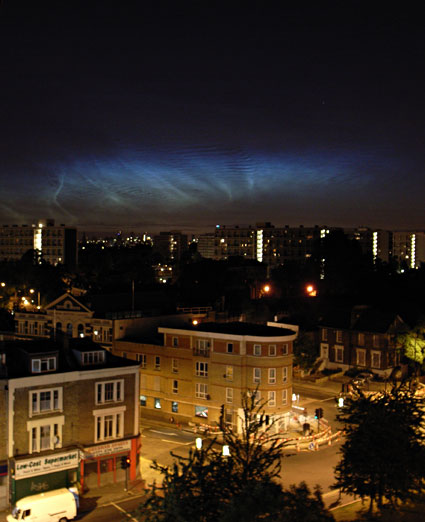
Before they'd got around to the 6.30pm follow up, the sleuths on the urban75 bulletin boards had already come up with the answer: they were Noctilucent clouds.
Here's how NASA describe them:
"They hover on the edge of space. Thin, wispy clouds, glowing electric blue. Some scientists think they're seeded by space dust.
Others suspect they're a telltale sign of global warming.
They're called noctilucent or "night-shining" clouds (NLCs). And whatever causes them, they're lovely."

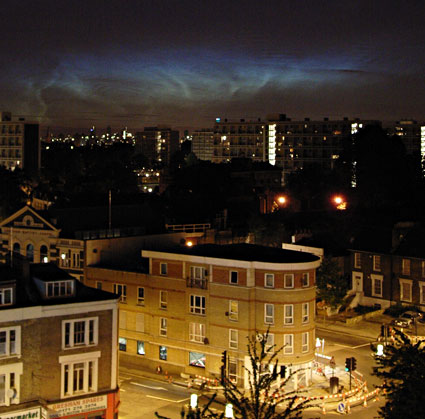
Noctilucent roughly translates into "night shining" in Latin, and the the clouds are most commonly observed at times close to the summer solstice at latitudes between 50� and 60� north and south of the equator.
The clouds are a fairly new phenomenon, first being recorded in 1885, two years after the massive eruption of Krakatoa expelled tons of volcanic ash as high as 80 km high into the Earth's atmosphere
"Although NLCs look like they're in space," says Gary Thomas, a professor at the University of Colorado , "they're really inside Earth's atmosphere, in a layer called the mesosphere ranging from 50 to 85 km high."
"The mesosphere is not only very cold (-125 C), but also very dry - one hundred million times dryer than air from the Sahara desert."
However, NLCs are made of water with the clouds consisting of tiny ice crystals about the size of particles in cigarette smoke.
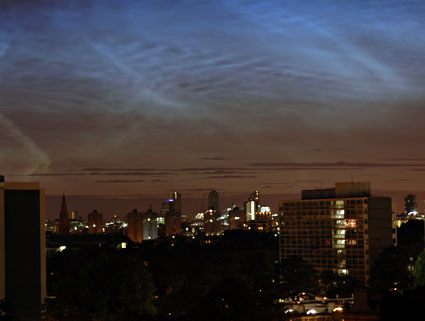 Zoomed in scene showing the brightness of the blue clouds - at 2.20am!
Zoomed in scene showing the brightness of the blue clouds - at 2.20am!
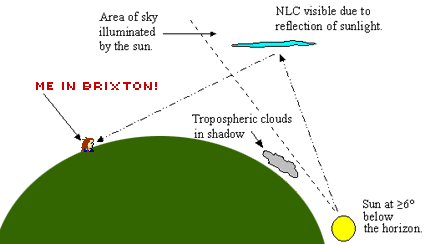 Explanation from the NASA site
Explanation from the NASA site
|